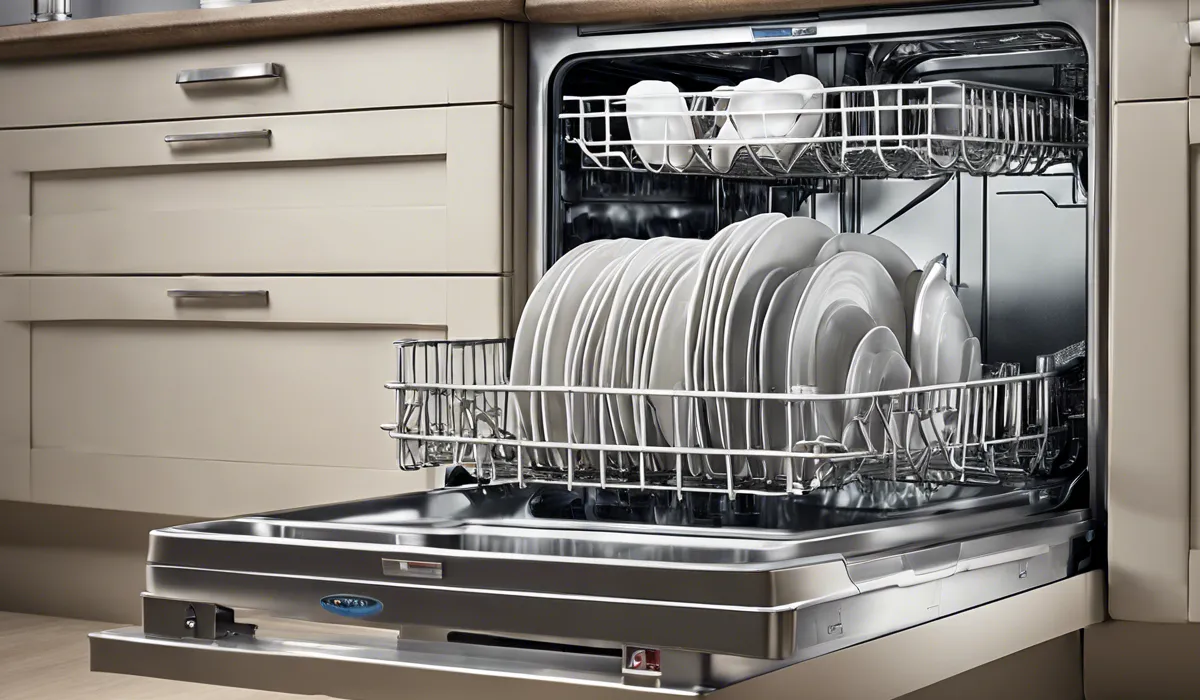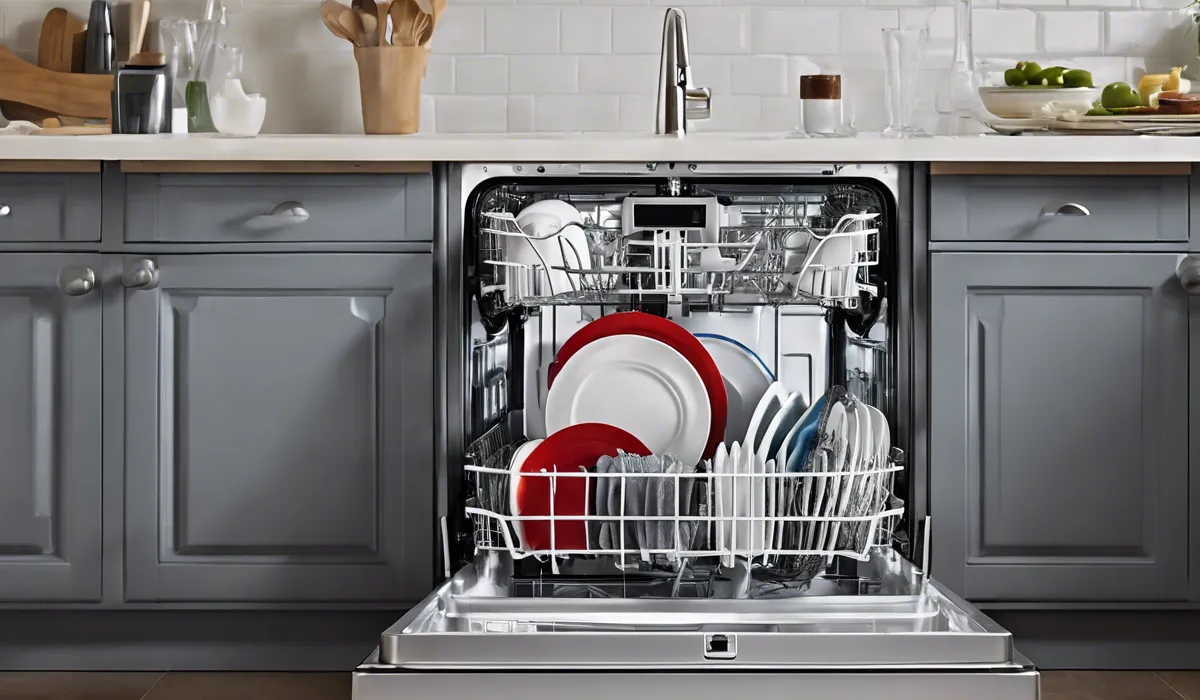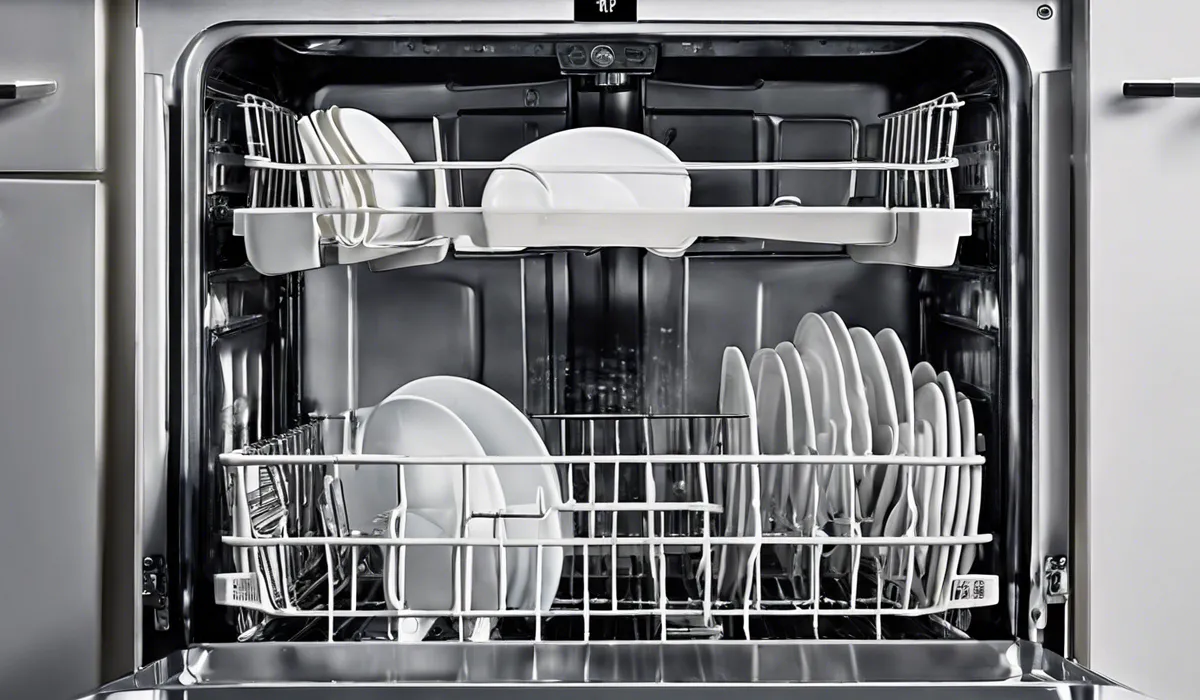What Happens Inside a Dishwasher: The Surprising Truth!
Inside a dishwasher, water is heated and mixed with detergent. Spray arms pump the water to clean dishes with jets. Soiled water drains away, and rinsing occurs with fresh water. Finally, dishes are dried using heated air or a fan.
Loading the Dishwasher

Arranging Dishes and Utensils
To begin, one must strategically place dishes and utensils in the dishwasher, ensuring they face the center. This arrangement maximizes the cleaning effect of the water jets.
Plates typically go on the bottom rack, angled to allow the water to run off, while cups, bowls, and more delicate items are placed on the top rack. Utensils should be loaded into the designated basket, handles down for safety and optimal cleaning.
Ensuring Proper Spacing for Water Flow
Proper spacing is crucial for the water and detergent to circulate effectively. Overcrowding can lead to dishes not being cleaned properly, so it’s important to leave some space between each item.
Additionally, make sure that nothing obstructs the spray arms’ movement or the dispenser’s opening during the cycle.
Adding Detergent to the Dispenser
Choosing the right detergent and adding the correct amount to the dispenser is essential for clean dishes.
Powder, liquid, or pods can all be effective, but make sure to use a detergent that is specifically designed for dishwashers. Fill the dispenser cup as directed, and if you have hard water, consider adding a rinse aid to prevent spots on glassware.
Selecting the Appropriate Wash Cycle
Modern dishwashers offer a variety of wash cycles tailored to different types of loads.
For everyday dishes, a normal cycle typically suffices. If you have heavily soiled pots and pans, a heavy-duty cycle may be necessary. Some dishwashers also provide eco-friendly options that use less water and energy.
The Wash Cycle

Water Intake and Heating
Once the dishwasher is loaded and started, it begins by taking in water. The water is then heated to the appropriate temperature, which is typically around 120 to 160 degrees Fahrenheit, to effectively break down food residues and grease.
Activation of Detergent Dispenser
At the optimal time during the wash cycle, the dishwasher’s detergent dispenser opens automatically. This timing ensures that the detergent is released into the hot water and starts to act on the dirty dishes.
Spraying of Hot Water and Detergent Solution
Once the detergent is mixed with the hot water, spray arms pump this solution forcefully onto the dishes. The arms rotate, spraying water evenly over all the dishes to ensure that each item is thoroughly washed.
Scrubbing Action of Water Jets
The pressurized water jets act as a scrubber, removing food particles and grime from the dishes. This action mimics the scrubbing one might do when hand washing but is far more efficient and less labor-intensive.
Drainage of Dirty Water
After the dishes have been washed, the dirty water is drained out of the dishwasher. This ensures that the final rinse uses clean water, which is crucial for leaving dishes spotless and hygienic.
Rinsing with Clean Water
Following the initial wash, the dishwasher rinses the dishes with fresh, hot water. This step removes any remaining detergent and loosens any last bits of food, resulting in sparkling clean dishes.
Drying Process

Heat Element or Fan Activation
Once the dishes are clean, the drying process begins. Some dishwashers use a built-in heat element to warm the air inside, which speeds up the evaporation of water from the dishes. Others may rely on a fan to circulate the air and assist in the drying process.
Evaporation and Condensation Mechanisms
The heat from the element or the movement of air by the fan causes water to evaporate from the dishes.
In some models, the stainless steel interior aids in condensation, where the moisture from the dishes condenses on the cooler walls of the dishwasher and is drained away.
Automatic Door Opening for Air Drying (If Applicable)
Certain dishwashers feature automatic door opening at the end of the drying cycle to let out steam and help the dishes dry faster. This feature enhances air circulation and can reduce energy consumption compared to using a heat element.
End of Cycle and Unloading Clean Dishes
When the cycle is complete, an indicator light or sound will alert you that it’s safe to unload the dishwasher.
Always unload the bottom rack first to prevent any residual water on the upper rack from dripping onto the clean dishes below. Your dishes are now clean, dry, and ready to be put away or used for your next meal.
FAQs About Dishwasher Operations
FAQ Question: What is the first step that occurs inside a dishwasher?
FAQ Answer: The first step inside a dishwasher is the heating of water, which is then mixed with detergent.
FAQ Question: How are dishes cleaned in a dishwasher?
FAQ Answer: Dishes are cleaned by spray arms that pump heated, detergent-mixed water in the form of jets onto the dishes.
FAQ Question: What happens to the soiled water in a dishwasher?
FAQ Answer: Soiled water is drained away from the dishwasher after the initial cleaning phase.
FAQ Question: How does the rinsing process work inside a dishwasher?
FAQ Answer: Rinsing occurs with fresh water to remove any remaining detergent and food particles from the dishes.
FAQ Question: What method is used to dry the dishes inside a dishwasher?
FAQ Answer: Dishes are dried using either heated air or a fan, depending on the dishwasher’s drying mechanism.
Final Thoughts
A dishwasher operates by heating water, mixing it with detergent, and then using spray arms to direct water jets at dirty dishes.
Post cleaning, it drains the soiled water and performs a fresh water rinse. The process culminates with the drying of dishes, achieved through heated air or a fan.





